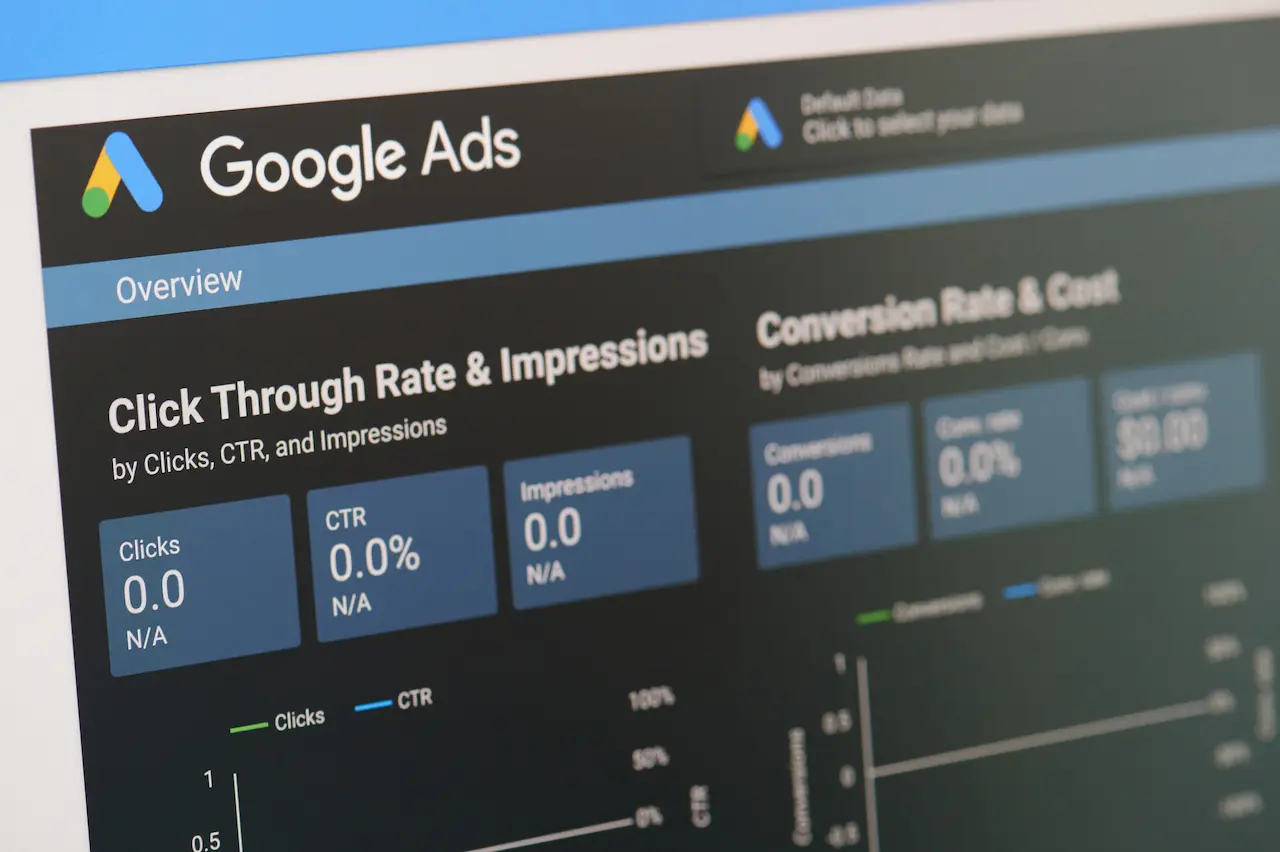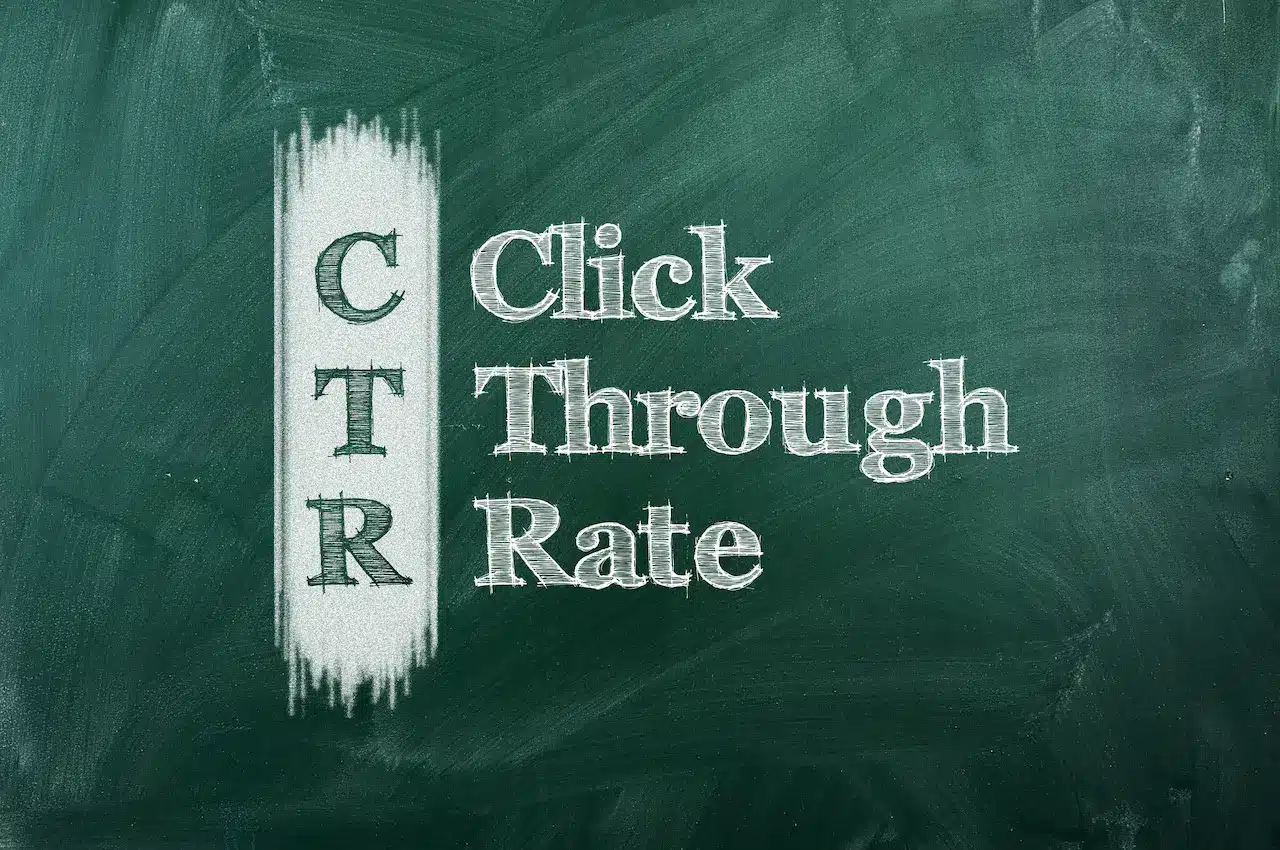The CTR of Google Ads vs Organic Results
Did you know there are approximately 40,000 Google search requests every second? This astounding statistic shows the vast amount of activity online and the crucial role that search engines play in the digital world. When businesses are looking to increase their online visibility, they often think of two main strategies: paid search via Google Ads or organic search through search engine optimization (SEO). How do the click-through rates compare between these two approaches? This blog will examine the nuances of CTR in Google Ads and organic search results. We will also explore why it is important to understand these metrics for your marketing strategy.
Table of Contents
ToggleWhat is the Click-Through rate (CTR) of a website?
Let’s first define CTR. The click-through rate is calculated by multiplying the number or impressions of an ad by the number of clicked links. This metric, which is expressed in percentages, serves as an indicator of the effectiveness of an ad.
CTR is 5%, for example, if you display your ad 100 times, and 5 people click on it. CTR is a key metric to evaluate the success of your digital marketing campaign.
CTR Comparison between Google Ads and Organic Results
Businesses face the challenge of reaching potential customers in the digital world. Google Ads, or paid search, and organic search are two of the most important strategies. This post compares the click-through rate (CTR) of both and emphasizes the importance of a well-balanced marketing approach.
Statistics
Recent research shows that there is a large difference in CTRs between organic search results versus paid search ads. Google’s first organic search result has an average CTR of approximately 28,5%. The second organic result is around 15,7%. The average CTR of paid search ads is just around 2%. These numbers raise a very important question: Why do organic results outperform ads when it comes to click-through rate?

The Trust Factor
Trust is one of the main reasons organic search results are more likely to have a high CTR. Organic listings are often perceived as being more trustworthy and credible by users than paid advertisements. Many users gravitate towards organic results because they perceive them to be more relevant and unbiased. This trust can result in higher conversion rates and engagement rates.
Paid ads, on the other hand, can be viewed as intrusive and annoying. Although they may be highly targeted ads, some users will avoid clicking them and prefer to look at the organic results.
Ad Position
CTR is also affected by the placement of organic and paid results on a search engine results page. Google Ads are typically displayed at the top and the bottom of SERPs, while organic results occupy a central part of the page. Users scroll past ads in order to see organic results. This contributes to the lower CTR of paid listings.
Google is continually optimizing its search results in order to improve the user experience. This may result in fewer ads being displayed above organic listings. This can reduce the visibility of paid ads and their CTR.
Google Ads CTR Influencers
Several factors can affect the performance of paid ads, including their inherent nature.
1. Ad Quality
CTR is largely determined by the quality of your Google Ads. Clicks are more likely for ads with compelling calls to action that are visually appealing and of high quality. Ad copy and creative elements that are regularly optimized can improve engagement.
2. Search Engine
It is important to choose the right keywords to drive targeted traffic towards your ads. CTR can be significantly increased by bidding on keywords that are highly relevant to your audience and aligned with their search intent. Targeting irrelevant or broad keywords can lead to wasted advertising spend and decreased engagement.
3. Campaign Structure
CTR can be affected by the way your Google Ads campaign is structured. Organising your campaign based on themes or categories of products allows you to create more targeted ad messages, which will resonate with your audience better and increase engagement.
4. Ad Positioning
The placement of your ad in the SERP may affect its click-through rate. Top-ranking ads are more visible, and they receive higher click-through rates. To achieve and maintain a top ranking, you will need to monitor and optimize your bids as well as quality scores.
Search Engine Results: Understanding Organic Search Results
Let’s now turn our attention to the organic search results. Organic search is the term used to describe listings that are not paid and appear in search results based on their authority and relevance.
SEO: What is it?
Search engine optimization is a process that improves your website’s visibility on search engine results. It involves optimizing your website’s content, technical features, and user-experience to increase rankings for the targeted keywords. SEO’s ultimate goal is to make sure your website appears as high in organic search results as possible, increasing visibility and CTR.
CTR and Organic Results: Factors that affect the CTR
CTR is influenced by several key factors:
- Position As we have already mentioned, the higher the ranking of your website, the greater the CTR. CTRs are often 67.6% greater for sites that rank one to five than for those that rank lower.
- Meta Descriptions and Title Tags: Creating compelling meta descriptions and title tags can have a significant impact on CTR. These elements are your first impression when appearing in search results. By enticing the user with relevant and engaging descriptions, you can encourage them to click.
- Rich snippets: Using structured data, you can make your website appear in search results with rich snippets. This can increase visibility and attract attention. Rich snippets can include extra information, such as images, ratings or reviews. This makes your listing more attractive.
- Brand Recognition: Established, well-known brands that have a strong presence online tend to enjoy higher CTRs. Users are more likely click on listings of brands they trust and recognize.

Why invest in both SEO and Google Ads for your business?
You may wonder which of the two approaches–SEO, or Google Ads for your business–should take priority. It is best to invest in both strategies as they complement each other and can drive traffic and conversions.
Google Ads: Benefits
Google Ads can provide you with immediate visibility, and help you reach people who are actively looking for your product or service. Google Ads has many benefits.
- Instant traffic: Google Ads, unlike SEO, can generate traffic as soon as you launch your campaign.
- Targeted reach: By using advanced targeting options you can target specific demographics, geographical locations and user behavior, making sure your ads are seen.
- Cost control Google Ads works on a Pay-per-Click (PPC) basis, which means you only pay if someone clicks your ad. This gives you better control of your budget.
SEO: Benefits and Advantages
SEO, while it may not provide immediate results like Google Ads, is a long-term strategy with many advantages.
- Sustaining Traffic SEO efforts can result in sustained organic traffic with time. You can receive clicks even if you don’t continue to spend money on ads once your website is ranked well.
- Cost Effectiveness: While SEO is a time-consuming process, it’s more cost-effective than paying for paid advertisements.
- Credibility: High organic ranking often translates to increased trust and credibility among users. Organic results are often clicked more by consumers, who perceive them as being more reliable than paid ads.
Find the right balance: Combining SEO with Google Ads.
Consider a balanced digital marketing approach that includes both Google Ads and SEO. Here are a few strategies that will help you harmonize both:
1. Google Adwords Keyword Research
Google Ads provides valuable insight into the keywords that drive traffic and convert. You can target high-performing keywords in your SEO campaigns by analyzing the results of your paid campaign.
2. Support SEO with Paid Advertisements
Google Ads can temporarily boost your visibility while you work to improve your organic ranking. This dual approach will help you generate traffic while you build your organic presence.
3. Retargeting Strategies
Google Ads and retargeting can improve your marketing efforts. Retargeting users who interact with your ads with organic content can reinforce your brand, increasing conversion rates.
4. Monitor Performance Metrics
Track the metrics for your Google Ads campaigns and SEO campaigns. You can make better decisions by analyzing CTR, conversion rate, and other key metrics.
Get Started with Google Ads & SEO
It can take a lot of time and effort to launch both a Google Ads campaign and an SEO campaign. Partnering with an agency that has experience in digital marketing can help you get started. Start with these simple steps:
1. Define your goals
Clearly define your business objectives before implementing either strategy. Do you want to increase traffic, brand awareness or immediate leads? Understanding your goals will help you to determine the best approach.
2. Develop a Strategy
Develop a strategy based on your goals that will outline how you’ll approach Google Ads as well as SEO. Consider creating a calendar of content, identifying keywords and setting timelines for campaigns.
3. Monitor and optimize
Monitor the performance of your campaigns after they are launched. Analytical tools can be used to measure traffic, engagement and conversions. Optimize your website and ads based on the insights you gain to increase CTR.
4. Expert assistance is available
Don’t be afraid to ask for help if you find it difficult to navigate Google Ads or SEO. Digital marketing agencies can offer valuable support and guidance to help you achieve success with your campaigns.

Conclusion
Understanding the difference between Google Ads versus organic search results in the competitive world of online marketing is essential.
Developing a strategy that works. Google Ads are a great way to reach a targeted audience and get immediate visibility.
By investing in each strategy, you can leverage the strengths of both, driving traffic and enhancing brand recognition, ultimately helping you achieve your marketing goals. Digital marketing isn’t a one size fits all solution. Success in an ever-changing online environment requires constant testing, analysis and adaptation.
Consider partnering with a digital agency that knows the ins and outs of Google Ads as well as SEO. You can leverage their expertise to maximize your online visibility and connect with the correct audience at the right moment.




